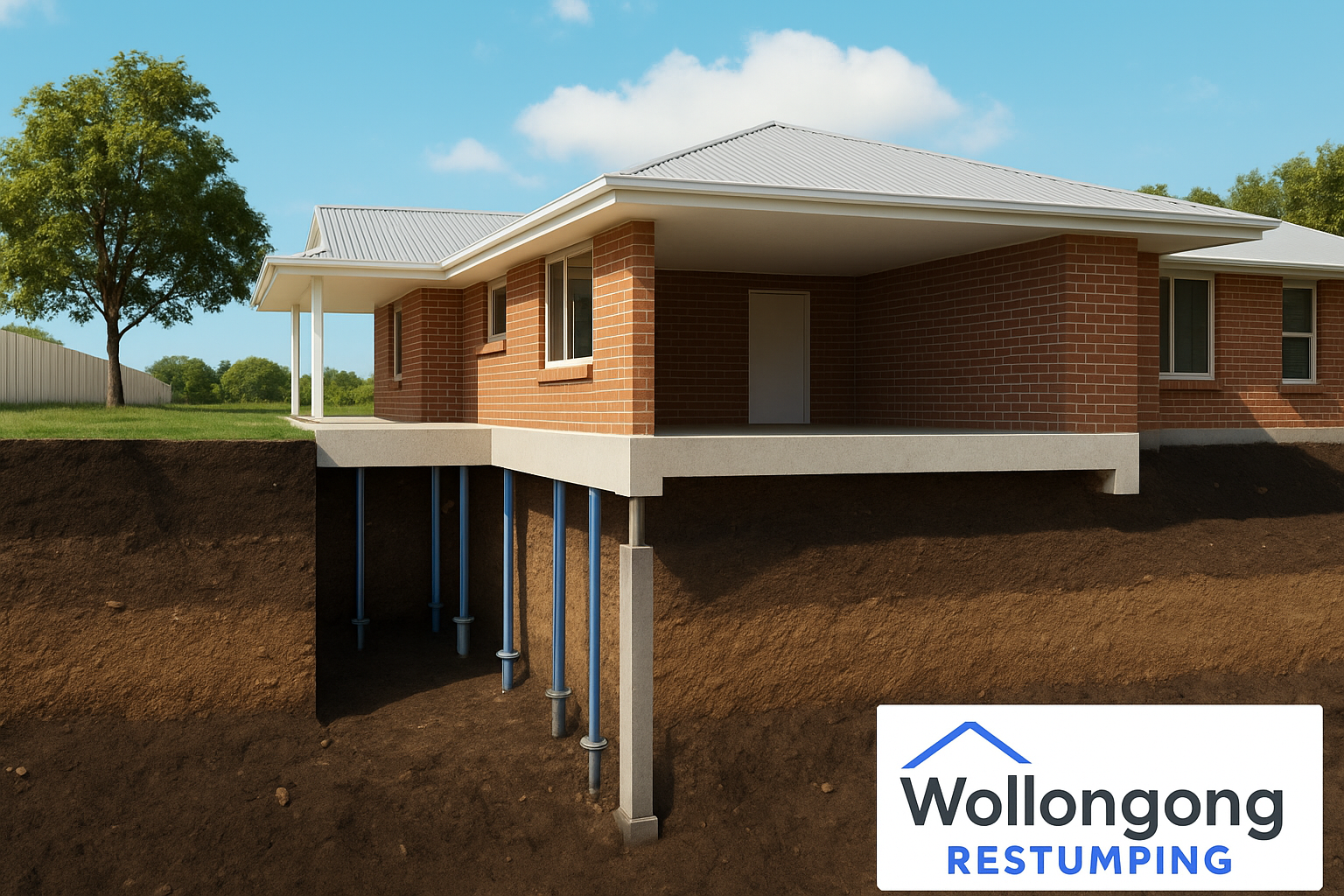wollongongrestumping@gmail.com
5 Critical Warning Signs Your Wollongong Home Requires Immediate Restumping Services
Your home's foundation represents the most crucial structural element ensuring safety, stability, and long-term value preservation for your property investment. In Wollongong's unique coastal environment, with its combination of clay soils, fluctuating moisture levels, and established housing stock featuring traditional timber stumps, foundation deterioration presents ongoing challenges that require vigilant monitoring and timely intervention. Understanding the warning signs of foundation failure can mean the difference between manageable maintenance costs and catastrophic structural damage that compromises both safety and property value.
Foundation problems rarely announce themselves dramatically—instead, they develop gradually through subtle indicators that homeowners often dismiss as normal settling or minor maintenance issues. Recognising these early warning signs empowers property owners to address problems before they escalate into major structural failures requiring extensive remediation. The coastal conditions, soil characteristics, and age of many Wollongong properties create specific vulnerabilities that make professional foundation assessment and timely restumping services essential for maintaining structural integrity and protecting your investment.

Understanding Foundation Deterioration: The Science Behind Structural Failure
Foundation deterioration occurs through multiple interconnected processes that affect different materials and structural systems in distinct yet related ways. Traditional timber stumps, common in older Wollongong properties, face unique challenges from moisture fluctuation, termite activity, and natural decay processes that gradually compromise load-bearing capacity. Understanding these deterioration mechanisms enables homeowners to identify problems early whilst appreciating the urgency of professional intervention when warning signs appear.
Moisture-related damage represents the primary threat to timber foundation systems, with Wollongong's coastal climate creating ideal conditions for accelerated deterioration. Seasonal rainfall variations cause soil expansion and contraction cycles that stress foundation elements whilst creating moisture gradients that promote fungal decay and timber degradation. Ground moisture levels fluctuate dramatically between wet and dry periods, causing differential movement that can crack concrete footings, shift timber stumps, and destabilise the entire foundation system. These moisture dynamics operate continuously, making foundation problems progressive rather than static issues.
Soil characteristics specific to the Wollongong region significantly influence foundation stability and longevity, with clay soils presenting particular challenges for structural integrity. Reactive clay soils expand when wet and contract when dry, creating powerful forces that can shift foundations, crack structural elements, and cause differential settlement across building footprints. The coastal escarpment's geological diversity means that soil conditions can vary dramatically even within individual property boundaries, creating complex loading patterns that stress foundation systems in unpredictable ways. Understanding your property's specific soil characteristics becomes crucial for recognising when foundation movement exceeds normal tolerances.
Termite activity poses an additional threat to timber foundation systems that operate independently of other deterioration mechanisms whilst often remaining hidden until significant damage occurs. Subterranean termites common to the Illawarra region can compromise structural timber rapidly and extensively, often targeting foundation elements where detection proves most difficult. The combination of moisture availability, timber accessibility, and limited inspection opportunities around foundation areas creates ideal conditions for termite establishment and colony expansion that can severely compromise structural integrity before visible signs appear above ground level.
1. Visible Floor Movement and Structural Instability
Floor movement represents one of the most obvious yet frequently misunderstood indicators of foundation problems, manifesting through various symptoms that range from subtle to dramatic depending on deterioration severity. Homeowners often dismiss minor floor movement as normal settling, but persistent or progressive movement typically indicates underlying foundation issues requiring professional assessment. Understanding the different types of floor movement and their implications enables property owners to distinguish between normal building behaviour and serious structural problems.
Bouncing or springy floors indicate insufficient support from compromised foundation elements that can no longer adequately transfer structural loads to stable ground conditions. When timber stumps decay, shift, or fail, the floors they support lose rigid support and begin flexing under normal loading conditions. This movement becomes particularly noticeable when walking across affected areas, with floors feeling unstable or responding excessively to footfall impact. Progressive worsening of floor bounce typically indicates advancing foundation deterioration that will continue until professional restumping addresses the underlying support deficiencies.
Sloping or uneven floor surfaces develop when differential foundation settlement creates height variations across the building footprint that manifest as noticeable gradients in floor levels. Minor slopes may initially seem insignificant, but progressive slope development indicates ongoing foundation movement that can accelerate rapidly once initiated. Marble or ball tests that demonstrate consistent rolling direction across floor surfaces provide simple diagnostic tools for identifying slope development, whilst more sophisticated measurements using levels or laser systems can quantify the extent of height variations requiring correction.
Gaps appearing between floors and walls signal structural movement that exceeds the building's capacity to accommodate differential settlement without visible distortion. These gaps typically develop gradually as foundation elements settle at different rates, causing floor systems to separate from wall structures that maintain different support systems. Progressive gap widening indicates active foundation movement requiring immediate professional assessment, as continued separation can compromise weather sealing, pest barriers, and overall structural integrity throughout the building envelope.
Creaking, groaning, or other unusual floor noises often accompany visible movement symptoms and provide auditory evidence of structural stress within foundation and floor framing systems. These sounds result from timber elements moving against each other under loading conditions, indicating insufficient connection stability or support adequacy that characterises foundation problems. New or increasing noise levels typically correlate with deteriorating foundation conditions that require professional evaluation to prevent progressive structural failure and ensure continued occupant safety.
2. Door and Window Operational Problems
Doors and windows provide sensitive indicators of structural movement because their operational requirements demand precise alignment and dimensional stability that foundation problems quickly compromise. These building elements rely on consistent frame geometry to maintain proper function, making them excellent early warning systems for detecting foundation settlement, movement, or failure before more dramatic symptoms develop. Understanding how foundation problems manifest through door and window operation enables homeowners to recognise structural issues during their earliest stages.
Sticking doors that previously operated smoothly indicate frame distortion resulting from differential foundation movement that alters door opening geometry beyond acceptable tolerances. Foundation settlement or shifting causes door frames to rack out of square, creating binding conditions where doors contact frames inappropriately during opening or closing operations. Progressive worsening of door operation typically correlates with advancing foundation problems that will continue affecting building geometry until underlying support issues receive professional attention through restumping or foundation stabilisation services.
Gaps appearing around door and window frames signal structural movement that has progressed beyond minor settling to create visible separation between building elements designed to maintain consistent contact. These gaps may appear along frame perimeters, between frames and surrounding wall structures, or within frame assemblies themselves where structural stress exceeds joint capacity. Progressive gap development indicates active foundation movement requiring immediate assessment, as continued separation compromises weather sealing, security, energy efficiency, and overall building integrity.
Windows that refuse to open or close properly demonstrate frame distortion similar to door problems but often provide more precise diagnostic information due to their typically tighter operational tolerances. Sash windows may bind within their tracks, whilst casement windows might not align properly with their frames during closing operations. Double-hung windows may develop uneven gaps or refuse to stay in position due to frame geometry changes that affect balance mechanisms and operational clearances essential for proper function.
Cracked glass in doors or windows can result from structural stress transmitted through frames that have been distorted by foundation movement beyond the glass's capacity to accommodate dimensional changes. Whilst glass cracking can result from various causes, patterns that suggest structural stress—such as corner cracks or stress patterns radiating from frame contact points—often indicate foundation-related movement requiring professional structural assessment. Progressive crack development or multiple glass failures across different building areas suggest systematic structural problems rather than isolated incidents.
3. Wall Cracks and Structural Damage Patterns
Wall cracking represents one of the most visible and concerning indicators of foundation problems, with crack patterns, locations, and characteristics providing valuable diagnostic information about underlying structural issues. Understanding how to interpret different crack types and their implications enables homeowners to distinguish between minor cosmetic issues and serious structural problems requiring immediate professional intervention. The relationship between foundation movement and wall cracking follows predictable patterns that experienced professionals use to diagnose foundation problems and recommend appropriate remediation strategies.
Horizontal cracks along wall bases typically indicate differential settlement between foundation elements and wall structures, creating shear stress conditions that exceed the wall materials' capacity to accommodate movement without visible damage. These cracks often appear near floor levels where wall structures meet foundation systems, representing the interface where movement differences concentrate stress. Progressive widening of horizontal cracks signals continuing foundation movement that requires immediate professional assessment to prevent more extensive structural damage and ensure occupant safety.
Vertical cracks in walls, particularly those appearing near corners or openings, often result from foundation settlement that causes building geometry changes exceeding the wall system's flexibility. These cracks may develop gradually as foundation elements settle at different rates, creating stress concentrations that eventually overcome wall material strength. Vertical crack patterns can provide diagnostic information about specific foundation problems, with crack locations and orientations indicating which foundation elements may be experiencing the most significant problems requiring targeted remediation.
Diagonal or stepped cracks frequently appear in brick or masonry walls experiencing foundation-related stress, following mortar joint patterns that represent the path of least resistance for stress relief. These distinctive crack patterns typically indicate differential foundation movement creating shear forces within wall assemblies that exceed joint strength. Stepped cracking often progresses systematically as foundation problems worsen, making crack monitoring essential for tracking problem development and timing professional intervention appropriately.
Internal wall cracks that appear in previously sound surfaces suggest structural stress levels that exceed normal building movement tolerances, often indicating foundation problems affecting overall building geometry. These cracks may appear in gyprock, plaster, or other wall finishes where structural movement creates stress concentrations beyond material capacity. Multiple internal wall cracks appearing simultaneously or progressively typically indicate systematic structural problems rather than isolated settling, requiring comprehensive foundation assessment and potential restumping services.
4. Plumbing and Utility System Disruptions
Plumbing and utility system problems often provide early indicators of foundation movement because these systems rely on precise alignment and dimensional stability that foundation problems quickly compromise. Underground and below-floor utility installations are particularly vulnerable to foundation-related disruption, making plumbing issues potentially valuable diagnostic tools for identifying structural problems before they manifest through more obvious symptoms. Understanding the relationship between foundation movement and utility system performance enables homeowners to recognise when apparently unrelated problems may indicate underlying structural issues.
Recurring drain blockages that develop without an obvious cause may result from foundation settlement, creating pipe misalignment, joint separation, or gradient changes that impair drainage system performance. Foundation movement can shift pipe runs out of proper alignment, create low spots where debris accumulates, or cause joint failures that allow soil infiltration and blockage development. Progressive worsening of drainage problems or blockages affecting multiple fixtures simultaneously often suggests systematic foundation-related pipe disturbance requiring professional assessment and potential restumping to restore proper system geometry.
Water pressure variations or flow irregularities throughout the property may indicate supply line damage resulting from foundation movement that stresses pipe connections, joints, or runs beyond their capacity to accommodate dimensional changes. Foundation settlement can create tension, compression, or shear forces in water supply systems that compromise joint integrity, crack pipes, or create flow restrictions affecting system performance. Sudden pressure drops, flow reductions, or pressure fluctuations may indicate active foundation movement requiring immediate investigation to prevent more extensive utility system damage.
Unexplained increases in water bills often signal hidden leaks resulting from foundation-related pipe damage that allows water loss without obvious surface evidence. Foundation movement can cause gradual joint failures, pipe cracking, or connection problems that develop slowly but result in significant water loss over time. Underground leaks near foundation areas may initially remain undetected whilst causing progressive soil saturation that can accelerate foundation deterioration through moisture-related damage mechanisms.
Gas line disruptions represent serious safety hazards that can result from foundation movement, stressing gas supply systems beyond safe operational limits. Foundation settlement or movement may compromise gas line joints, connections, or pipe integrity in ways that create leak hazards requiring immediate professional attention. Any indication of gas odours, particularly near foundation areas or below-floor spaces, demands immediate evacuation and professional assessment to ensure occupant safety and system integrity.
5. External Structural Indicators and Property Changes
External structural indicators provide valuable diagnostic information about foundation problems whilst often being more easily observable than internal symptoms that may require closer inspection to detect. Understanding how foundation problems manifest through external building changes enables homeowners to conduct regular property assessments that identify developing issues before they progress to more serious stages requiring extensive remediation. External indicators often provide the earliest warning signs of foundation problems, making systematic property inspection an essential component of preventive maintenance programs.
Building lean or tilt that becomes apparent through visual inspection or measurement indicates significant foundation movement that has progressed beyond minor settlement to create obvious structural distortion. Even small amounts of building tilt can indicate serious foundation problems, as structures are designed to remain essentially vertical under normal conditions. Progressive tilt development suggests continuing foundation movement requiring immediate professional assessment to determine appropriate stabilisation strategies and prevent more extensive structural failure.
Exterior wall cracking follows similar patterns to internal wall damage but may be more easily observed during routine property maintenance and inspection activities. External crack patterns can provide valuable diagnostic information about foundation movement directions and severity whilst indicating specific areas requiring professional attention. External cracks may also present immediate concerns regarding weather protection, pest barriers, and building envelope integrity that require prompt attention regardless of underlying foundation issues.
Gaps appearing between building elements such as walls and foundations, or between different structural components, signal movement that has exceeded the building's capacity to accommodate differential settlement without visible separation. These gaps may appear around building perimeters, between additions and original structures, or at interfaces between different foundation systems. Progressive gap development indicates active foundation movement requiring professional assessment and potential restumping services to restore structural integrity and prevent further deterioration.
Paving, pathways, or landscaping features that show signs of settlement, cracking, or displacement around building perimeters may indicate foundation-related soil movement affecting adjacent areas. Foundation problems can cause soil disturbance that extends beyond the immediate building footprint, affecting surrounding constructed features in ways that provide early warning signs of structural issues. Systematic cracking patterns in driveways, paths, or retaining walls near foundation areas often correlate with underlying structural problems requiring professional investigation.
Professional Assessment and Remediation Strategies
Professional foundation assessment involves comprehensive evaluation techniques that provide accurate diagnosis of structural problems whilst identifying appropriate remediation strategies based on specific site conditions, building characteristics, and problem severity. Understanding the assessment process enables homeowners to participate effectively in professional consultations whilst making informed decisions about recommended interventions. Professional assessment combines visual inspection, measurement techniques, and technical analysis to develop a comprehensive understanding of foundation problems and their implications for structural safety and long-term building performance.
Structural engineering assessment provides a technical analysis of foundation problems that quantifies problem severity whilst identifying specific remediation requirements for ensuring continued structural safety and performance. Professional engineers utilise specialised knowledge, measurement equipment, and analysis techniques to evaluate foundation conditions beyond the scope of general inspection services. Engineering assessment typically includes load analysis, soil evaluation, and structural calculations that determine appropriate restumping specifications, foundation modifications, or alternative stabilisation strategies suitable for specific site conditions.
Restumping specification development requires detailed analysis of existing foundation conditions, building loads, soil characteristics, and performance requirements that ensure appropriate material selection, installation techniques, and quality standards for long-term structural adequacy. Professional restumping contractors combine technical knowledge with practical experience to develop comprehensive solutions addressing specific foundation problems whilst meeting building code requirements and performance standards. Specification development considers factors including stump spacing, footing requirements, material selection, and installation techniques appropriate for site-specific conditions and building requirements.
Quality assurance protocols ensure that restumping work meets professional standards whilst providing long-term structural performance and durability under service conditions. Professional restumping services include inspection procedures, material verification, installation monitoring, and completion testing that verify work quality and compliance with specifications. Quality assurance documentation provides warranty support whilst ensuring that completed work meets building code requirements and professional standards for structural adequacy and safety.
Project timeline and cost considerations require careful planning that balances homeowner needs with technical requirements whilst ensuring appropriate resource allocation for successful project completion. Professional restumping projects involve multiple stages, including assessment, design, permitting, material procurement, installation, and final inspection, which require coordination and scheduling for efficient completion. Understanding project requirements enables homeowners to plan appropriately whilst ensuring that necessary work proceeds without unnecessary delays that could allow foundation problems to worsen.
Conclusion
Foundation problems require prompt professional attention to prevent minor issues from developing into major structural failures that compromise safety and property value. The warning signs discussed in this guide provide homeowners with essential knowledge for recognising foundation problems during their early stages when remediation remains manageable and cost-effective. Regular property inspection combined with an understanding of these warning indicators enables proactive maintenance that protects your investment whilst ensuring continued structural safety.
Professional assessment becomes essential when warning signs appear, as foundation problems typically worsen progressively until appropriate intervention addresses underlying causes. Delaying professional consultation often results in more extensive damage requiring costlier remediation than would have been necessary with earlier intervention. Investment in timely restumping services provides long-term value through improved structural integrity, enhanced property value, and peace of mind regarding your family's safety.
Remember that foundation problems affect every aspect of building performance, from structural safety to operational efficiency and long-term durability. Professional restumping services provide comprehensive solutions that address immediate safety concerns whilst ensuring long-term structural adequacy under varying environmental conditions and loading requirements.
About Wollongong Restumping
Wollongong Restumping delivers comprehensive foundation repair and restumping services throughout the Illawarra region, combining decades of local experience with modern techniques and materials that ensure lasting structural solutions. Our qualified team understands the unique challenges presented by Wollongong's coastal environment, soil conditions, and established housing stock, providing tailored solutions that address specific site requirements whilst meeting contemporary building standards. We specialise in all aspects of foundation work, from minor repairs and adjustments to complete restumping projects that restore structural integrity and enhance property value. Our commitment to quality workmanship, professional service, and customer satisfaction ensures that your foundation investment provides reliable performance and long-term value. Contact Wollongong Restumping today for expert assessment and professional foundation services that protect your property and your family's safety.
Ready to work with Wollongong Restumping?
Let's connect! We’re here to help.
Send us a message and we’ll be in touch.
Or give us a call today at 0242026325





